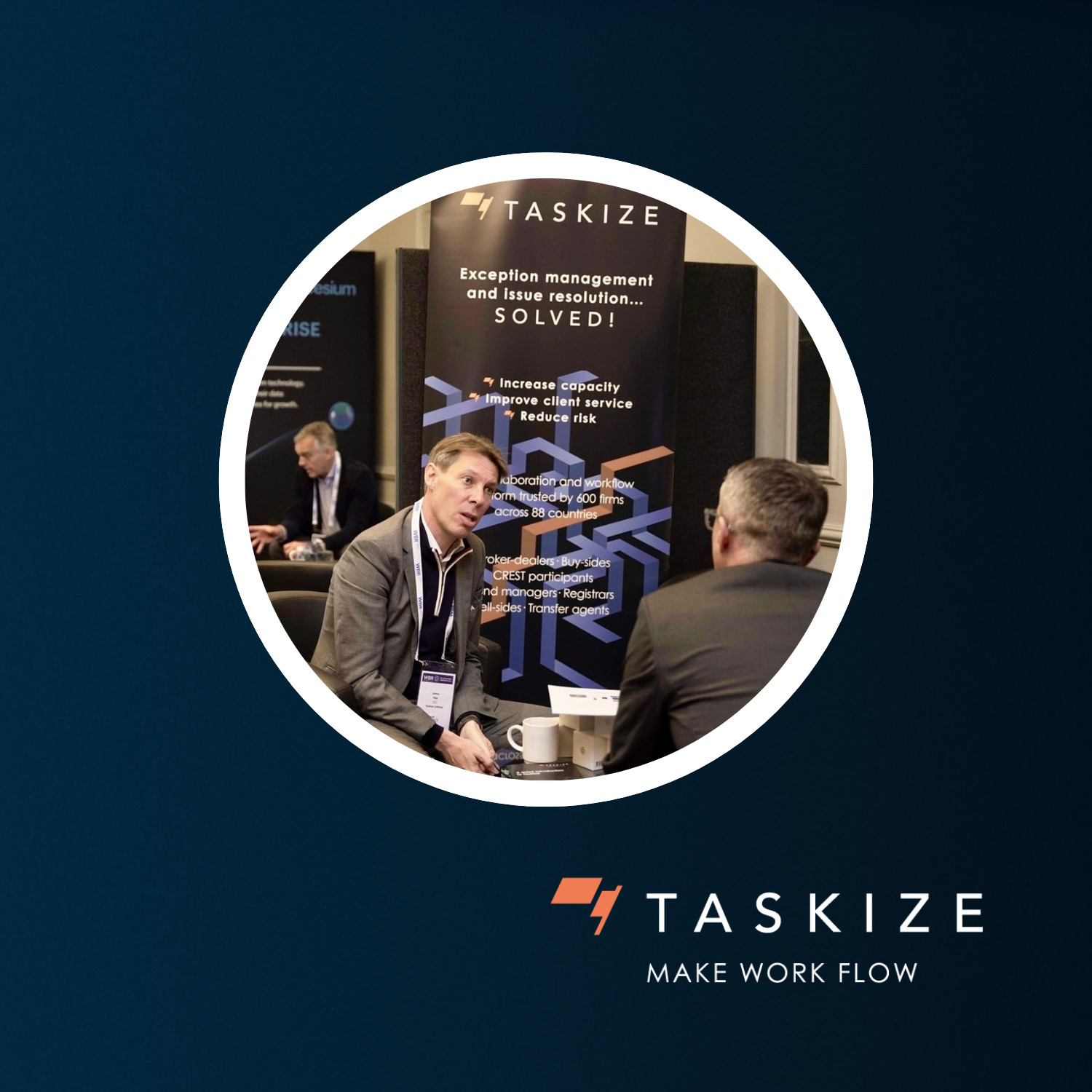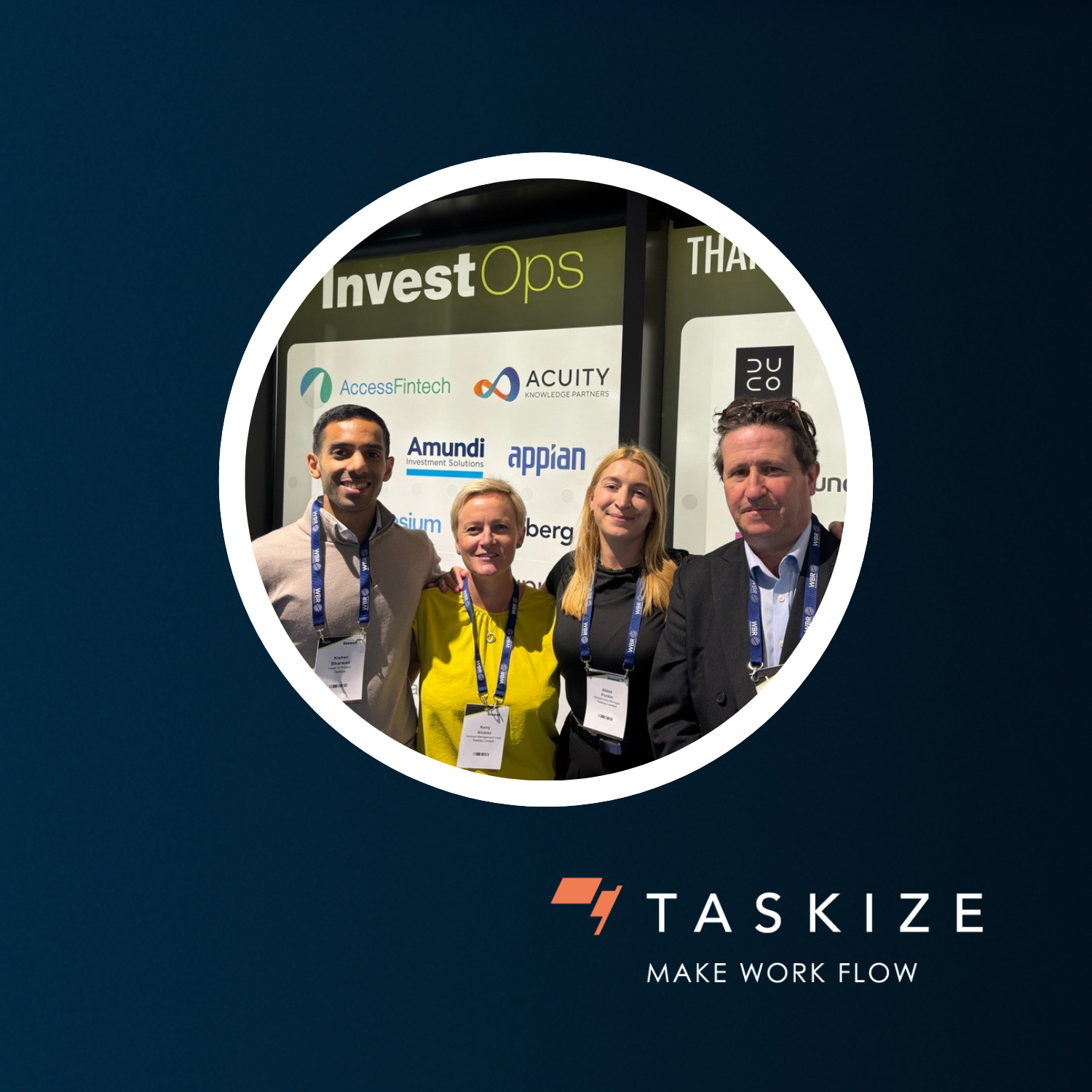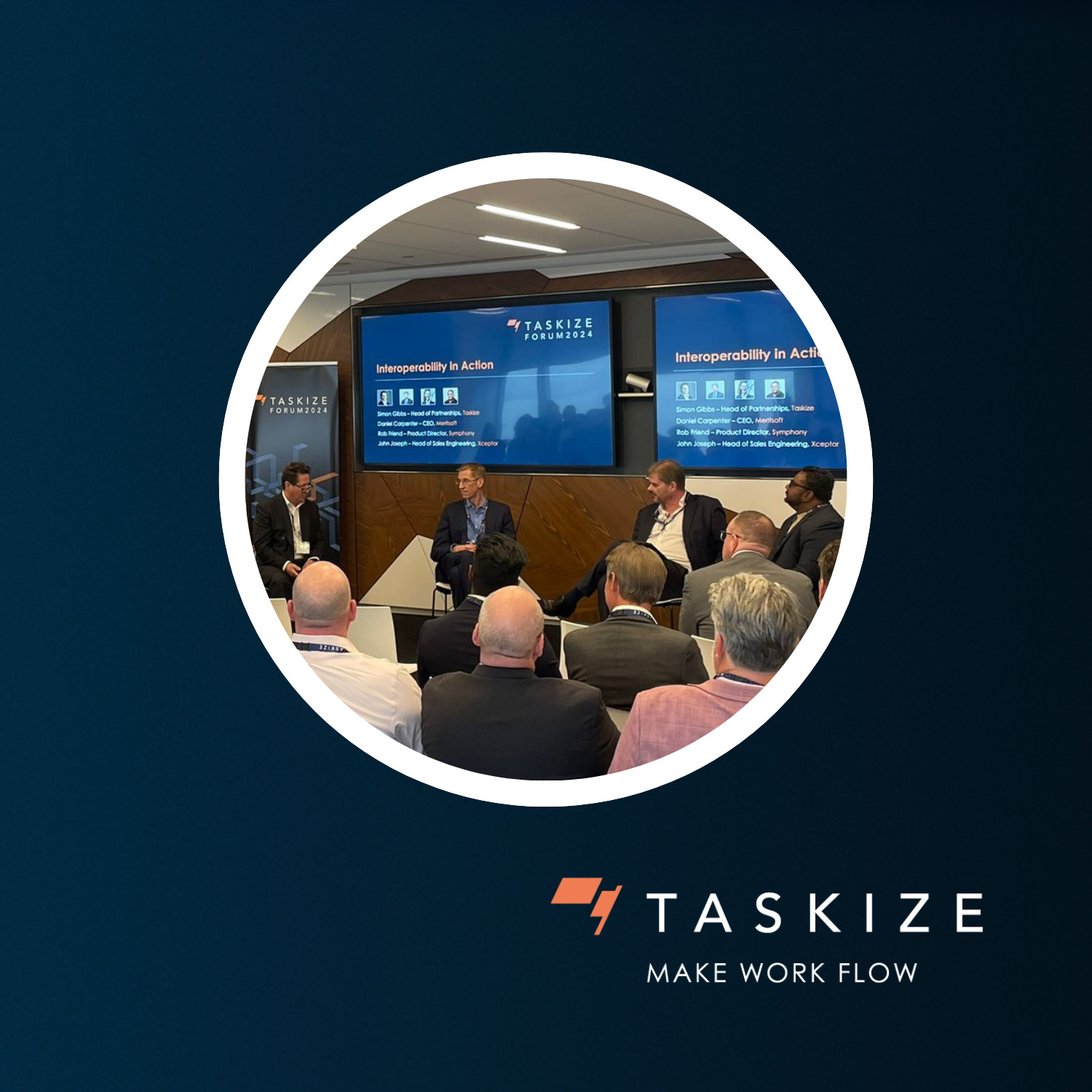Driving the future of investment ops: Taskize’s 5 key takeaways from InvestOps Europe 2025
Taskize recently attended InvestOps Europe 2025 in Paris – the world’s leading buy-side investment operations conference.
Over several days of engaging sessions and discussions, a number of themes consistently emerged. Here are our 5 key takeaways from the event – the ideas and priorities we believe will shape the future of buy-side operations.

L-R: Taskize’s John Magennis (Account Manager), Sam Gardiner (Head of Sales), Marcin Galeziowski (Business Development Manager)
- Standardisation and data quality
The importance of data standardisation and breaking down silos was emphasised across multiple sessions. Standardised, interoperable data helps firms manage exceptions more effectively and reduce settlement fails – a key priority as the industry moves towards real-time operations and T+1.
As highlighted by a panellist, “When it comes to data, it’s important to standardise your data sets and remove silos. This will help you manage exceptions and avoid fails.”
- AI and automation in operations
AI continues to be a major driver of innovation in investment operations. From natural language processing for corporate actions to AI-powered decision support, firms are finding practical applications that improve quality and reduce costs.
One standout stat from the “Unlock Real Operational Value with Generative AI” session captured the challenge perfectly:
“AI can do 95% of our process correctly; it’s the remaining 5% that is so hard.”
The emergence of Agentic AI was also identified as a potential game-changer for the industry.
- Transformation, optimisation, and alignment
A recurring theme throughout the conference was the need to transform and optimise operations, with a focus on aligning the technology stack to business goals.
When working with technology providers, firms should have as few as possible but as many as required. The tech stack needs to be aligned, connected, and with a clear and cohesive view across the company.
As one speaker said, “It’s not build or buy. It’s buy, then build. Invest in the appropriate tech stack and then, if needed, build a bespoke add-on or integration matching your needs.”
- Optimising outsourced operations
Does your infrastructure match the process you are carrying out?
The “Optimizing Outsourced Operations” panel explored how firms must ensure their technology infrastructure truly supports the processes being outsourced. Flexible, scalable systems are vital for maintaining efficiency and controlling costs in outsourced environments.
- Resilience, collaboration, and cultural transformation
As the transition to T+1 in Europe looms, industry leaders underscored that resilience must be built “by design” – not just within IT, but across all operational layers.
It was emphasised that robust resilience frameworks, cross-firm collaboration, and clear KPIs are essential.
The concept of “organisational alpha” also resonated strongly: how culture, behaviour, and mindset can drive performance beyond systems and processes.
As one participant noted, “We have moved from transformation as a project to transformation as a culture.”
You May Also Like
These Related Stories

InvestOps Connect 2024: Key insights shaping the future of investment operations

Taskize at InvestOps Europe: Key insights for the future of investment ops

No Comments Yet
Let us know what you think